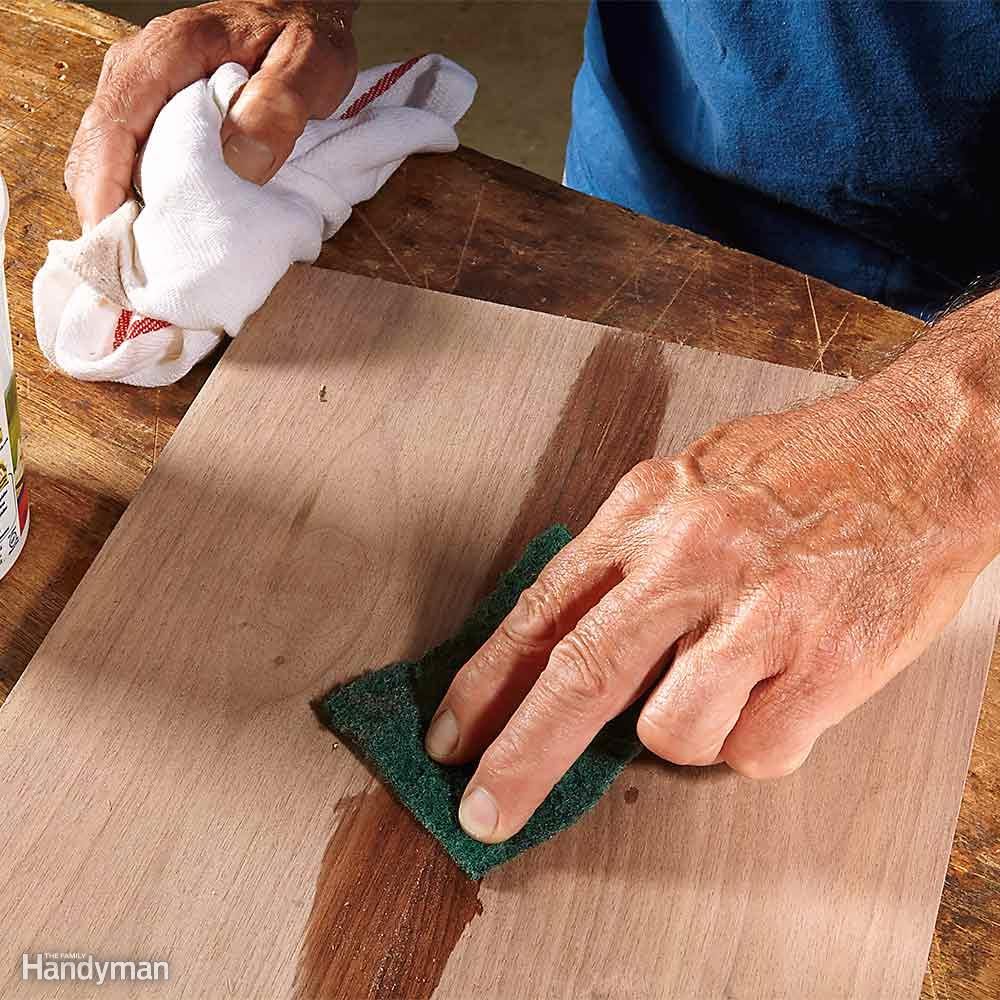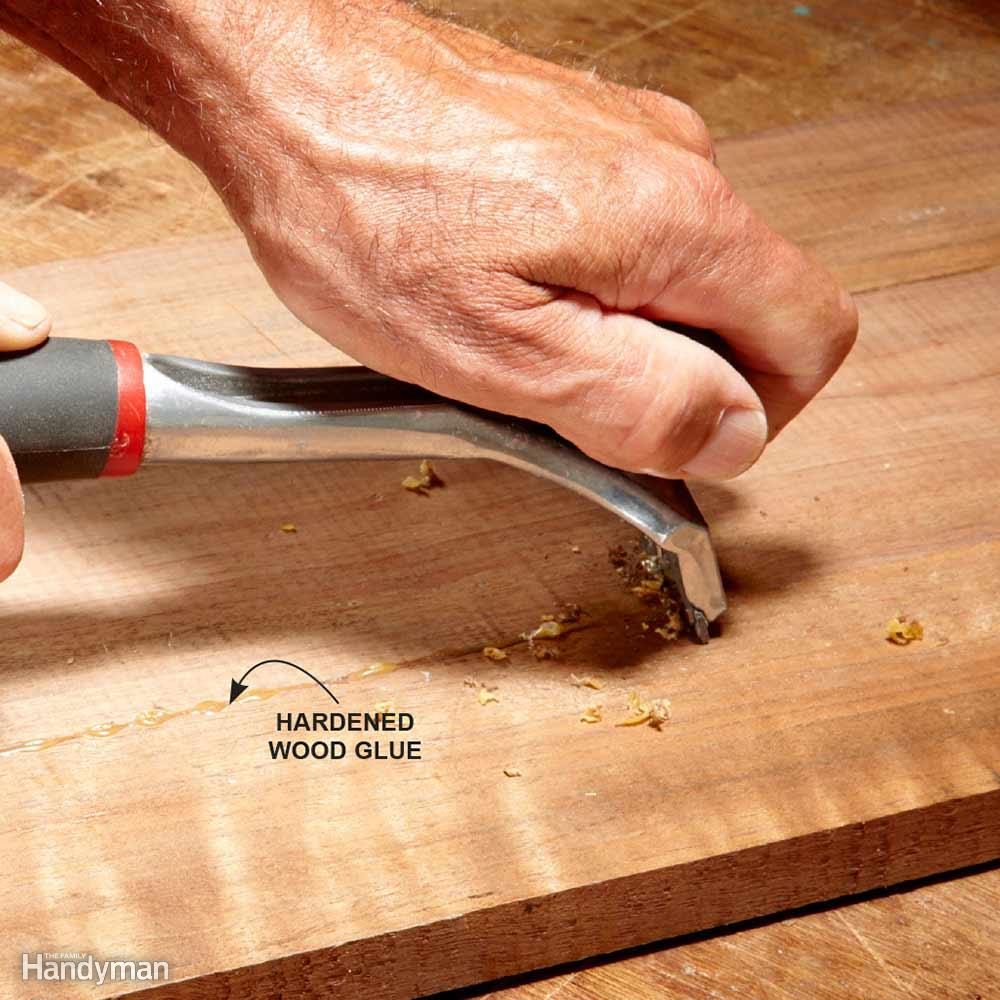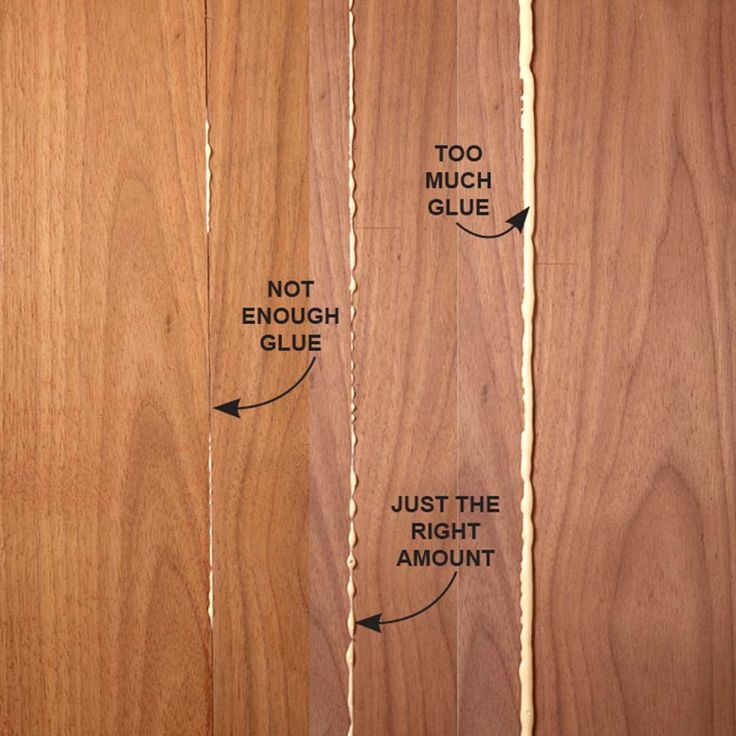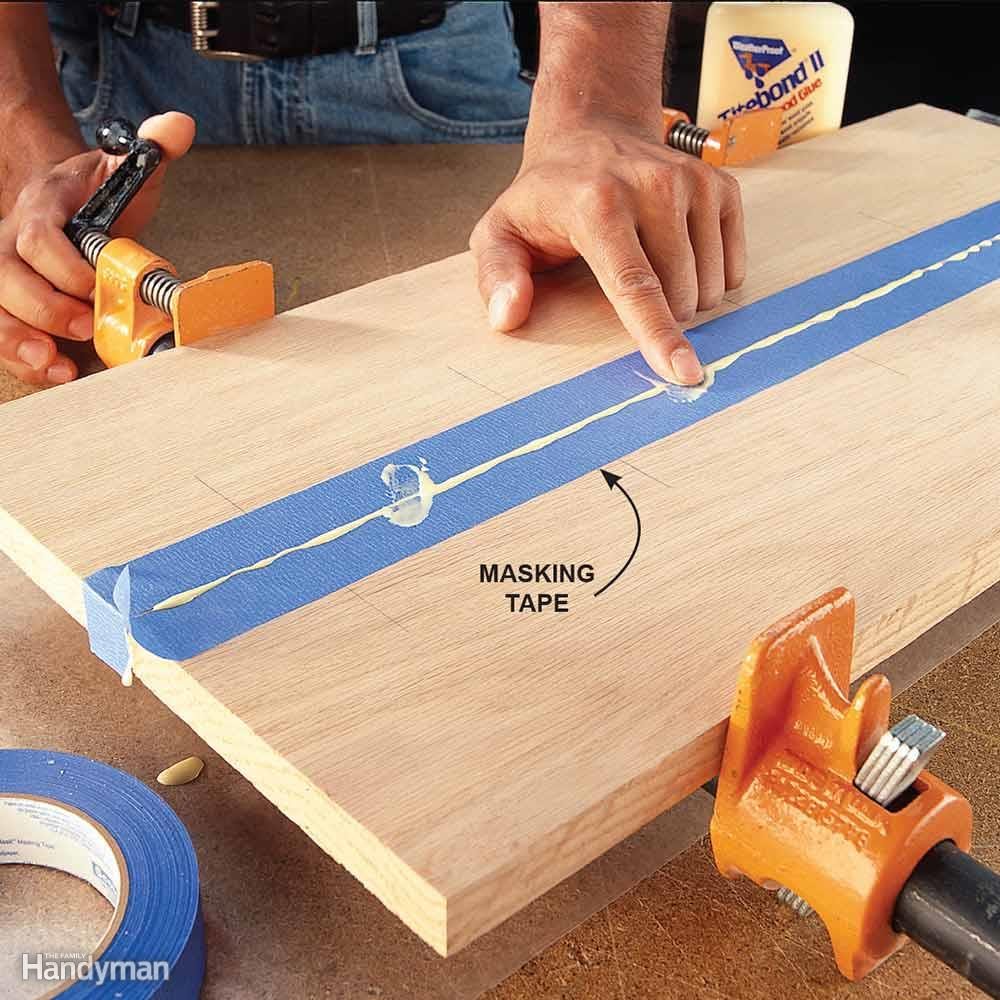Spread glue with a notched trowel
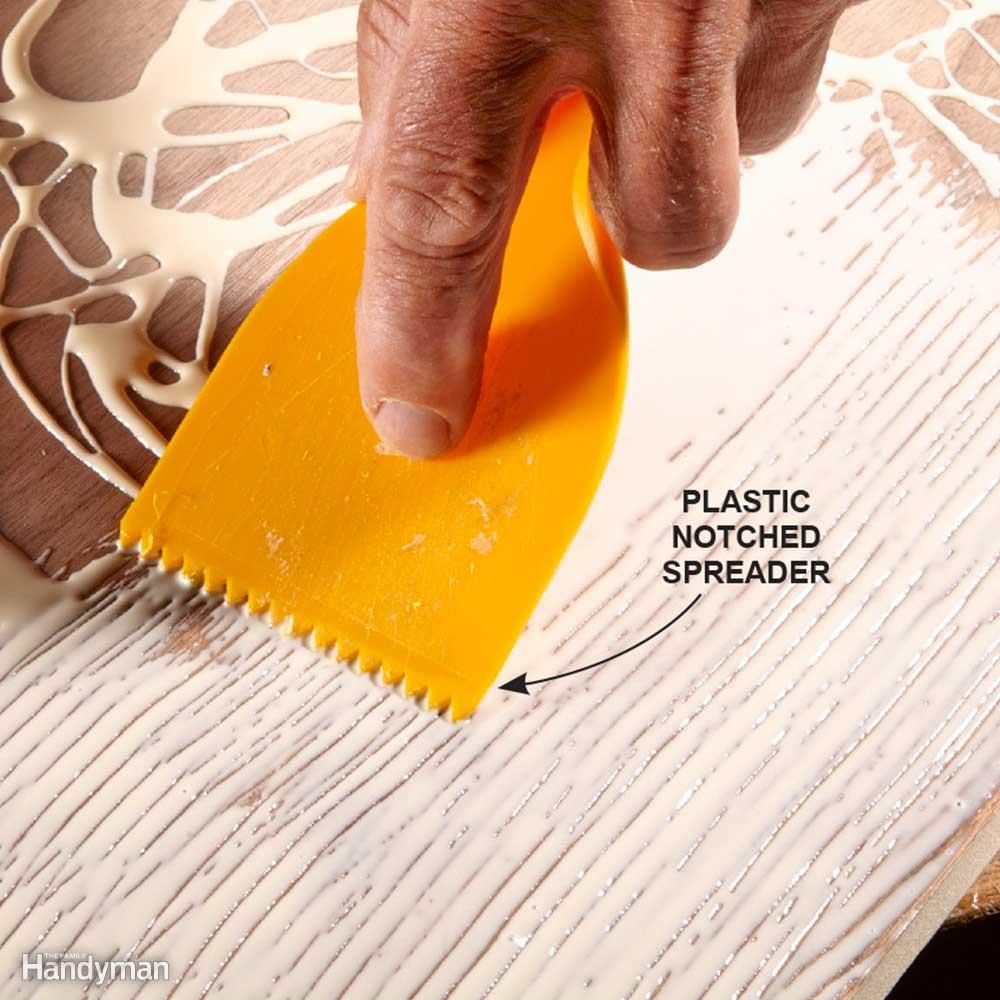
When you’re gluing large surfaces, an inexpensive notched plastic trowel works great for spreading the glue. To find one, look in the flooring or tile section of the hardware store or home centre. If you’re fortunate enough to have a pair of “pinking” shears in the family sewing basket, you can make our own spreader from an expired credit card.
Water finds hidden glue
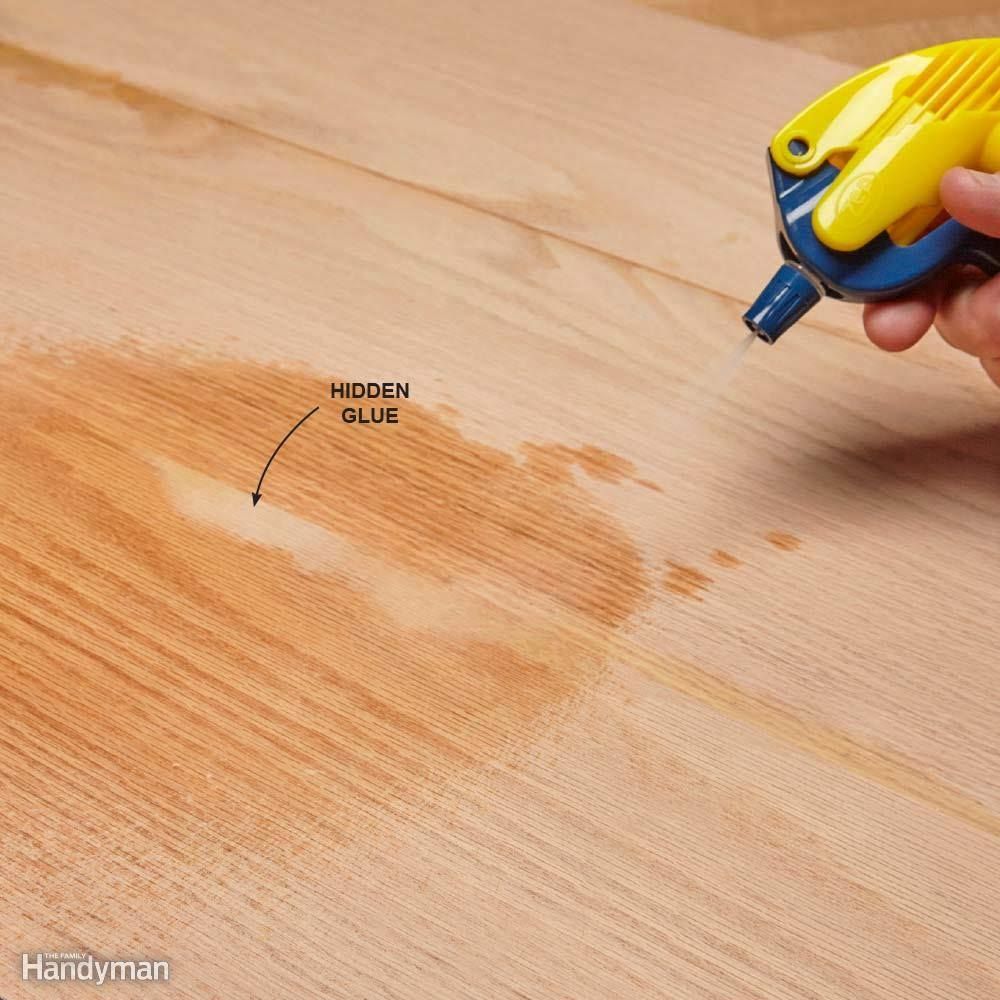
Once squeezed-out glue has been removed, there’s still a chance that some is hiding. And if you don’t find it now, you’ll see it later when you apply stain or finish. Spray some warm water near glue joints to make hidden glue more visible. The water will also soften the dried glue, making it easier to scrape off.
Let it gel, then shave it off
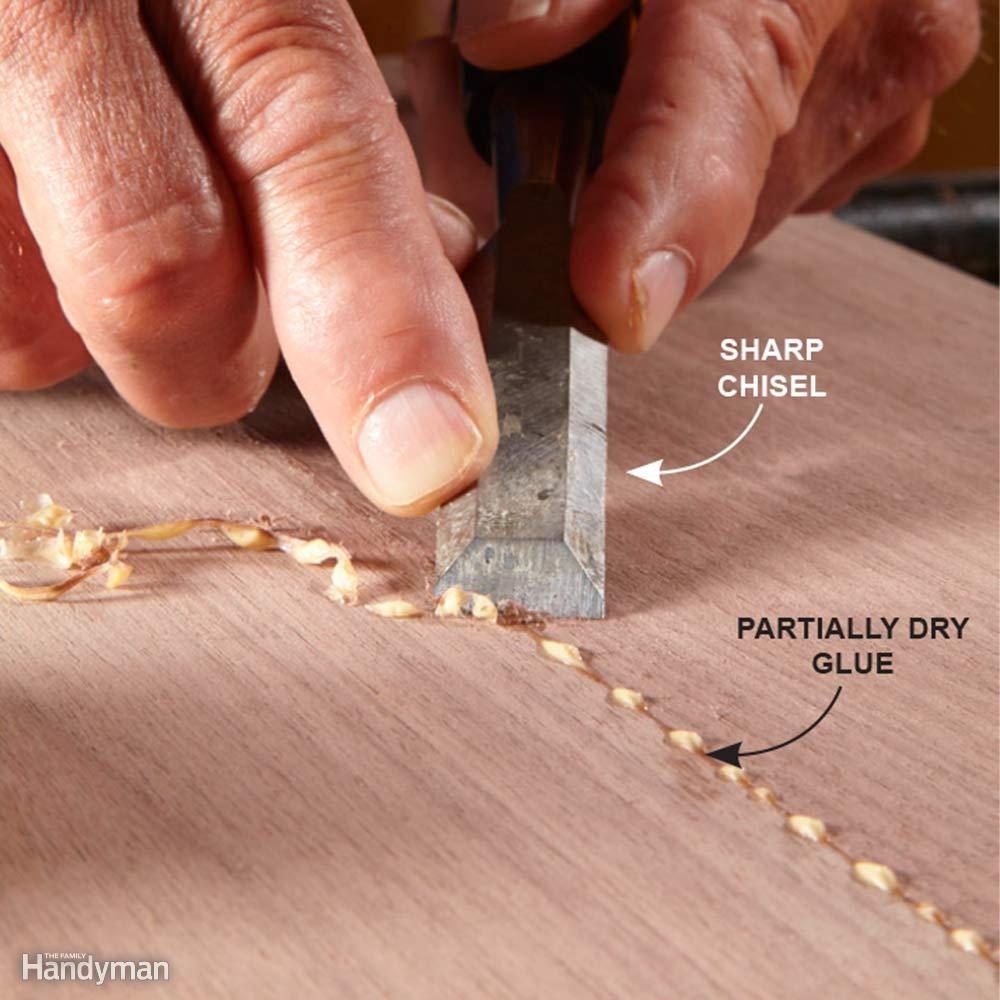
Look at any woodworkers’ forum and you’ll likely find a debate about the best way to remove glue squeeze-out. Some woodworkers insist that you should clean it up immediately with a damp rag. Others let it dry completely, then scrape it off. We think that in most cases the best method is to wait about 30 to 60 minutes – just until the glue turns a darker colour and changes to a gel – and then shave it off with a sharp chisel. This will remove almost all of the glue without making a mess. You may still have a little cleanup to do, but it’s a lot less work than cleaning up wet glue or removing hard glue.


